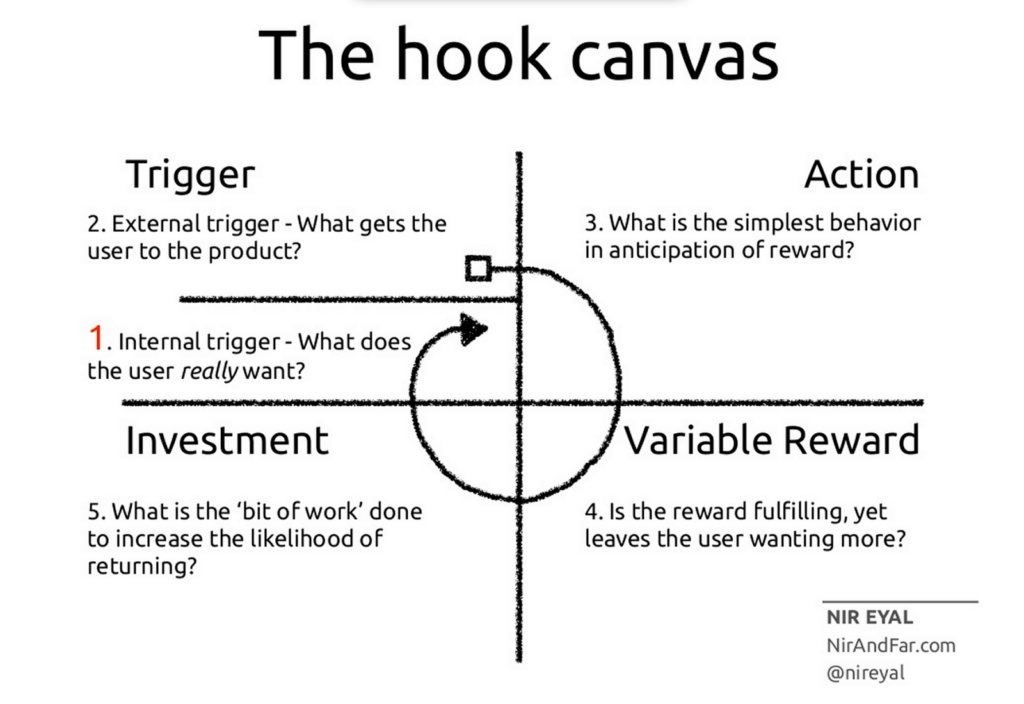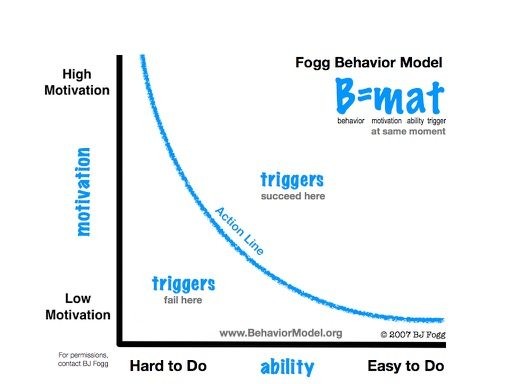I re-read the book Hooked by Nir Eyal and these are my notes.
1/ The key question that the book answers is: how to make habit-forming products. And its answer is a model that involves four stages: a) trigger; b) action; c) variable reward; d) investment

2/ Why should products be habit-forming? It’s because only those products that become part of someone’s daily life go on to become valuable. So, whether a product has habit formation potential is a leading indicator for whether the product will turn out to be valuable.
3/ There are obviously ethical considerations regarding habits-forming products. Is Instagram good or bad? The important nuance to be made is whether a product is habit-forming or whether it is addictive. The latter suggests that the user regrets engaging with it, but is unable to quit. That’s clearly addictive and unethical.
4/ Habit formation potential of any product = its frequency of use * perceived utility per use
That is, the more we use and the more we feel per use that we’re getting high value (v/s alternatives), the more we become habitual to the product.
5/ Products don’t become habit-forming if either their frequency of use is too low, or their perceived utility per use is too low.
Example: frequency of shopping on Amazon is typically not daily, but because the value one gets from it is so high that the next time the desire to shop arises, people remember Amazon.
5/ Ultimately, habits are cue-response loops. Wake up -> brush your teeth. Dinner time -> open Netflix.
The final destination for products is to occupy an internal trigger within the consumer’s mind:
when this happens -> do this.
6/ Are you building a product? Answer this: what itch is your product scratching?
It’s a false narrative that entrepreneurs should focus on making painkillers, not vitamins. Most of the consumer apps satisfy higher needs in the Maslow’s hierarchy, and hence can’t be painkillers.
7/ Big businesses can be made from vitamins, provided you make action on the user’s front super-easy in terms of effort/cost,
Habit-forming products often start as vitamins, but graduate to painkillers once a habit is formed (as not doing a habit causes pain).
So, a habit can be said to be formed when not doing it creates an itch, or feels weird.
8/ Triggers to using a product are often emotions or psychological. Bored? Open twitter.
9/ Only the trigger isn’t enough to make habit-forming product, you need the user to take an action too (as habits as cue-response patterns).
How do you make sure the user takes action? Here, BJ Fogg’s B=MAT model is helpful.

10/ The more motivated is someone to get what your product is promising, and the easier it is for them to get that, the more likely that they will act.
11/ Motivation is often measured on a seek-avoid axis (pleasure/pain, hope/fear, social-acceptance/rejection).
Ability is anything that user doesn’t want to spend and includes time, money, effort, mental energy, reputation, etc.
12/ In my opinion, everything else being equal, make things easier (i.e. work on ability) as motivation is often very hard to influence (because it is a function of too many variables at the user’s end).
13/ Once the user takes an action, next comes the variable reward. Rewards are things humans desire: status, approval, information, mastery, money and so on.
14/ Rewards are required to reinforce the neural pathways of the cue-response loop, and the variable part makes things unpredictable and increases motivation significantly to re-engage in that cue-response to find out what happens next (thereby reinforcing the loop even further).
14/ The last part of the model is investment from the user. This investment creates a sunk cost for the user and an opportunity for the app to ask the user to come back.
Investment also makes the user think of the product favorably, as they assume that their investment means they’re finding the product valuable.
Join 200k followers
Follow @paraschopra